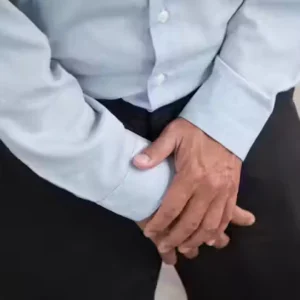Helen Kim Pelvic Floor Physical Therapy
155 W 72nd Street #606 NEW YORK, NY 10023 (646) 643-4688

Women seek pelvic floor physical therapy for a variety of reasons. Some are looking to reduce those embarrassing and worrisome leaks that can happen with a cough, sneeze, laugh, or exercise after having a baby. Women who have had a long labor, difficult delivery, or a cesarean section will also experience pain from scar tissue formation and trauma to the pelvic floor muscles. Others present with pain in the pelvis, upper legs, abdomen, and buttocks that may be due to tight pelvic floor muscles or underlying medical conditions. All of the conditions described can greatly affect their personal lives and relationships. Each situation requires different treatment and I am a women’s health physical therapist trained to provide specialized care that will improve your pelvic floor health. Click the title to learn more.

As a pelvic floor physical therapist, I frequently encounter men experiencing pelvic pain, and there can be different triggers or causes of pain. Hernias, nerve entrapment, straining caused by constipation, stress, injuries to the pelvis or lower extremities, or overdoing it at the gym can lead to tightness and pain of the pelvic floor muscles. Men also present with complaints of pain with ejaculation, urinary urgency, weak urinary flow, or testicular pain. These symptoms are often associated with Chronic Pelvic Pain Syndrome (CPPS). Click the title to learn more.

I graduated from Columbia University in 2008 with a Doctorate in Physical Therapy. I have over 17 years of clinical experience working in orthopedic rehabilitation, pelvic health, and lymphedema therapy. I hold several certifications in health and wellness including; Certification in lymphedema therapy specializing in the Vodder technique to treat lymphedema of the trunk, arm, and hand after lymph node removal due to breast cancer; 200 Hour Certification in Vinyasa and Prenatal Yoga, Mat Pilates, Reformer, and Cadillac; Certified Health Coach through the National Society of Health Coaches for healthcare professionals. Click the title to learn more.
Learn More

“…..She [Dr. Kim]…is extremely knowledgeable, innovative and thorough in her treatments and explanations….” – A.S
“…Helen is an excellent physical therapist, whose holistic approach helped me improve my overall health and well-being..” – C.C.
“…Helen helped me through my pregnancy with twins and post-partum with everything from terrible back pain to fixing my severe diastasis recti…” – L.G.
“…She [Dr. Kim] is one on one and focuses on your individual needs, I have been going to her for ten years and there is nobody in nyc I trust more…” -R.